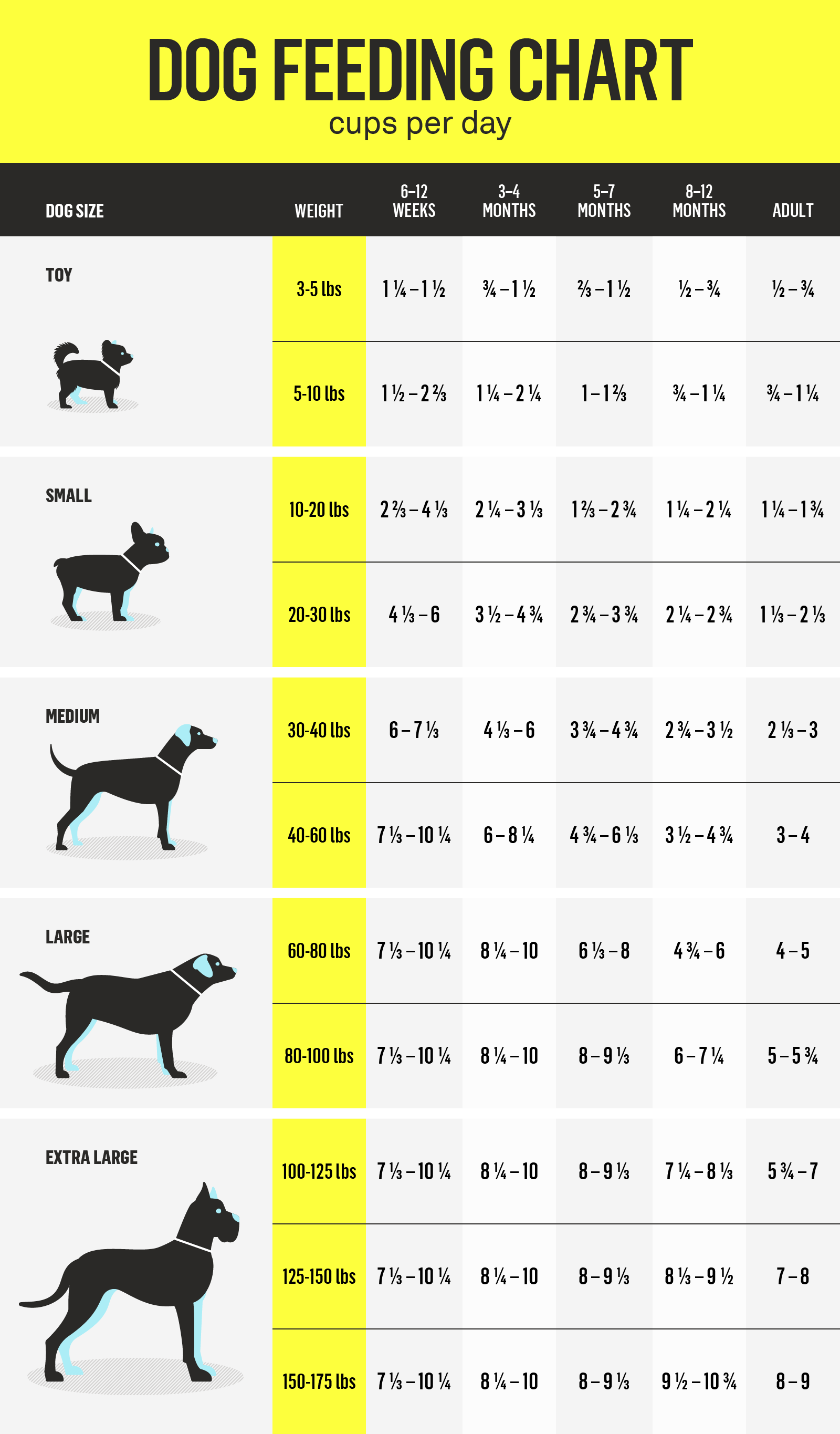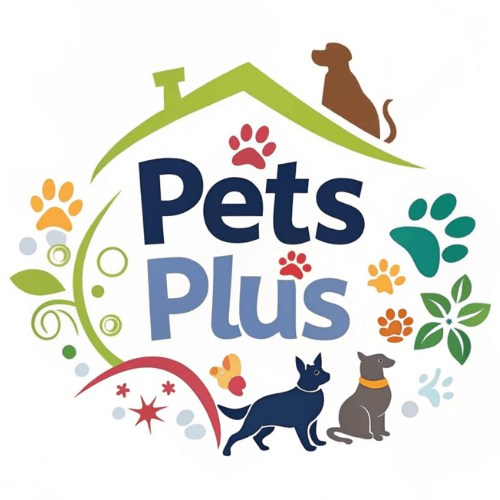Have you ever wondered if you’re feeding your furry friend the right amount of food? It’s a common concern among pet owners, but the good news is that there’s a simple solution: a dog food chart. By using a chart to determine how much food to feed your dog, you can ensure that they’re getting the nutrition they need to stay healthy and happy.
A dog food chart takes into account your dog’s weight, age, activity level, and other factors to help you determine the appropriate amount of food to feed them each day. Whether you’re a new dog owner or you’ve been caring for your furry friend for years, a dog food chart can be an invaluable tool in ensuring that your dog is getting the right amount of food to meet their unique needs.
The amount of food your dog needs depends on his age, size, breed, and activity level. As a general rule, adult dogs should eat 2-3% of their body weight in food each day. Puppies, on the other hand, require more frequent meals and should eat 4-5 times per day. Use this chart as a guide to determine how much to feed your dog based on his weight and age.

How Much Food Should I Feed My Dog Chart?
Feeding your dog the right amount of food is essential for their health and well-being. But with so many different types of dog food and varying nutritional requirements, it can be tough to know exactly how much to feed your furry friend. That’s where a dog food chart can come in handy. In this article, we’ll explore the ins and outs of dog food charts and how to use them to determine the right amount of food for your pup.
What is a Dog Food Chart?
A dog food chart is a guide that helps you determine how much food to feed your dog based on their weight, age, and activity level. These charts typically provide recommended serving sizes of different types of dog food, such as dry kibble, wet food, or raw food. They may also take into account your dog’s breed or health conditions, which can affect their nutritional needs.
Using a dog food chart can help ensure that your dog is getting the right amount of nutrients without overeating or becoming overweight. However, it’s important to note that these charts are just guidelines and may not be suitable for every dog. You should also consult with your veterinarian to determine the best diet and feeding plan for your specific pet.
How to Use a Dog Food Chart
To use a dog food chart, you’ll need to know your dog’s weight, age, and activity level. Most charts will provide a recommended serving size based on these factors, which you can then adjust based on your dog’s individual needs. For example, a highly active dog may need more food than a couch potato of the same weight.
It’s also important to consider the type of food you’re feeding your dog. Dry kibble and wet food have different caloric densities, so you may need to adjust the serving size accordingly. Additionally, some dog foods are formulated for specific breeds or health conditions, so be sure to choose a food that meets your dog’s needs.
The Benefits of Using a Dog Food Chart
Using a dog food chart can have several benefits for both you and your dog. First and foremost, it can help ensure that your dog is getting the right amount of nutrients for their age, weight, and activity level. This can help prevent obesity and other health problems associated with overfeeding.
Additionally, using a dog food chart can help you save money on dog food by reducing waste. If you’re unsure of how much to feed your dog, you may end up throwing away uneaten food or feeding them too much, both of which can be costly.
Finally, using a dog food chart can help you establish a consistent feeding routine, which can be beneficial for your dog’s digestion and overall health. By feeding your dog the same amount of food at the same time each day, you can help regulate their metabolism and prevent digestive upset.
Dog Food Chart vs. Feeding Guidelines
While a dog food chart can be a helpful tool, it’s important not to rely on it exclusively. Feeding guidelines provided by your veterinarian or the dog food manufacturer may also be useful in determining how much to feed your dog.
Feeding guidelines may take into account additional factors that aren’t included in a dog food chart, such as your dog’s body condition score or energy needs. Additionally, guidelines may be more specific to the type of food you’re feeding, which can help ensure that your dog is getting the right balance of nutrients.
Ultimately, the best way to determine how much to feed your dog is to consult with your veterinarian. They can help you develop a feeding plan that takes into account your dog’s individual needs and health status.
Conclusion
Feeding your dog the right amount of food is essential for their health and happiness. By using a dog food chart and consulting with your veterinarian, you can help ensure that your dog is getting the right balance of nutrients without overeating or becoming overweight. Remember to consider your dog’s age, weight, activity level, and individual needs when determining how much to feed them, and always choose a high-quality dog food that meets their nutritional requirements.
Frequently Asked Questions
1. How much food should I feed my dog according to the chart?
Feeding your dog the right amount of food is crucial for their overall health and well-being. The amount of food your dog needs depends on various factors such as their age, weight, activity level, and breed. A dog food chart can be a useful tool to determine the appropriate amount of food for your furry friend.
However, it’s important to remember that the chart is a general guideline and not a one-size-fits-all solution. You should always consult with your veterinarian to determine the specific nutritional needs of your dog and adjust their food intake accordingly.
2. What should I consider when using a dog food chart?
When using a dog food chart, it’s important to consider your dog’s individual needs. As mentioned earlier, factors such as their age, weight, and activity level should be taken into account. Additionally, you should consider the quality of the food you are feeding your dog.
Not all dog foods are created equal, and some may contain fillers or additives that can negatively impact your dog’s health. Look for high-quality dog foods that contain real meat as the first ingredient and avoid those with artificial colors, flavors, or preservatives.
3. Can I feed my dog more than the recommended amount on the chart?
Feeding your dog more than the recommended amount on the chart can lead to overfeeding and obesity. Obesity can cause a host of health problems for your dog, including joint pain, diabetes, and heart disease.
If you feel that your dog is still hungry after being fed the recommended amount, consult with your veterinarian to determine if you need to increase their food intake or if there may be an underlying health issue causing their increased appetite.
4. Should I adjust my dog’s food intake as they age?
Yes, as your dog ages, their nutritional needs may change. Puppies require more calories and nutrients to support their growth and development, while older dogs may require fewer calories to maintain a healthy weight.
Consult with your veterinarian to determine the appropriate amount of food for your dog at each stage of their life and adjust their food intake accordingly.
5. What are the signs that my dog is not getting enough food?
If your dog is not getting enough food, they may exhibit signs such as weight loss, lethargy, and a dull coat. They may also become more vocal about their hunger and may start scavenging for food.
If you notice any of these signs, consult with your veterinarian to determine if you need to increase your dog’s food intake or if there may be an underlying health issue causing their symptoms.

In conclusion, knowing how much food to feed your dog is crucial for their health and well-being. By using a feeding chart, you can ensure that your furry friend is getting the proper amount of nutrients they need to thrive. Remember to adjust their food intake based on their age, weight, and activity level to avoid overfeeding or underfeeding.
Additionally, it’s important to monitor your dog’s weight and body condition regularly to ensure that they aren’t becoming overweight or underweight. If you notice any changes in their appetite or weight, consult with your veterinarian to adjust their diet accordingly.
Ultimately, feeding your dog the right amount of food is a key component of providing them with a happy and healthy life. With the help of a feeding chart and close observation, you can ensure that your furry friend is getting all the love and care they deserve.
